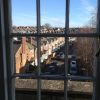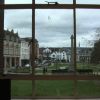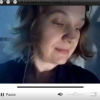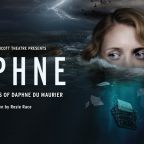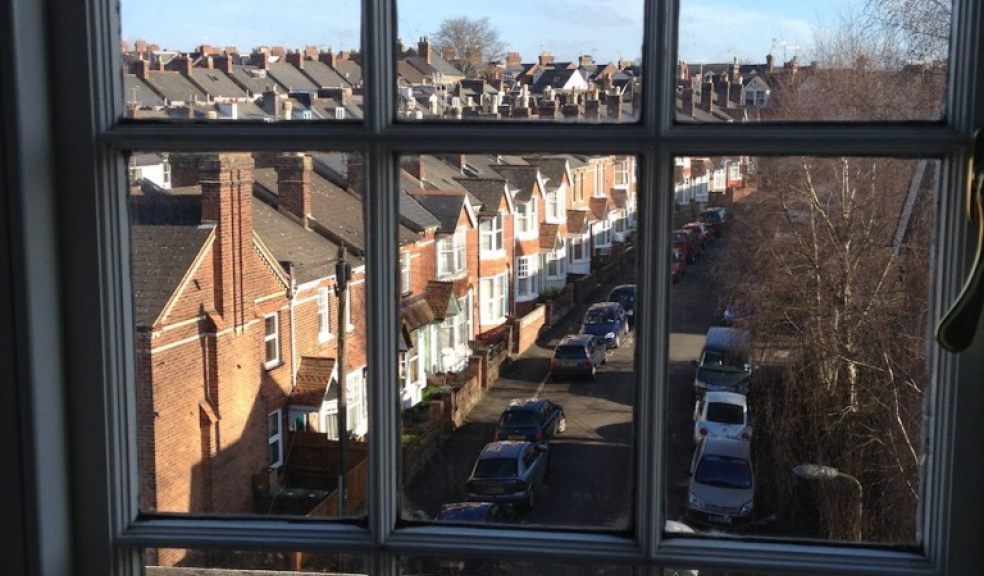
A Room with a View: An interview with co-author and director of ‘This City’s Centre’
The recent project known as This City’s Centre, created by the collective Blind Ditch, has been causing quite a stir in Exeter as it is getting residents to question what lies behind their city centre. The Exeter Daily managed to grab a conversation with the co-author of the project, Paula Crutchlow, to find out more about this fascinating project and how a view from your window can not only be a piece of art but can also trigger a conversation as to what is private and public space.
For those readers who may not be familiar with Blind Ditch’s This City’s Centre, could you tell us a little bit about what the project is and how far you have got with it?
Quite a while ago, Volkhardt Müller – who is one of the core Blind Ditch members – came up with the idea of making a video installation that recorded the favourite views through people's windows and projected them large-scale into a public space. The aim was to explore what constitutes public and private space in British cities, and the notion of community ‘ownership’; not just in the sense of land deeds but also how we perceive our agency with regards to the space outside our window, what we feel affects us about it and the power we might have to affect it. He suggested this concept to the rest of Blind Ditch and we were all really excited by it and wanted to pursue it, so we all got involved in different ways.
This eventually led to the three-part project This City's Centre, which uses different kinds of digital art activities to overlay public spaces with the very private views of its inhabitants. The first part is Window, the video installation in the Central Courtyard at the Royal Albert Memorial Museum (RAMM), which invites you to see 40 residents’ views of the city through sound and moving image.
The second part, Linger, is a limited edition interactive map, which will be released on 21 August and which you can buy from different places in the city such as Exeter Phoenix and RAMM. The map costs £2, which is about the price of a cup of coffee, so very reasonably priced! It offers you a range of ways to walk around the city and engage in various actions – all of which happen inside the view of someone who has been involved with the project. Through the use of QR codes you can hear sound clips that share people's views of the city centre, drawn both from the installation research, and from interviews we did on the streets. There is also the invitation to tweet about your views as you follow the map, and we are keen to encourage a level of interactivity that creates more discussion about people's city centre opinions, thoughts, loves and challenges. You need a smartphone to be able to take part in all of the map activities. But if you haven't got one, we tested it out in small groups and it’s a really fun thing to do with a friends so you could join up with someone who has.
The third part is the performance Here, Now, which I'm directing. It incorporates digital media in the form of live streaming. We are working with five Exeter-based theatre, dance and performance makers, a small group of Exeter College students and, very excitingly for us, some of the people who participated in submitting their views to the installation are also involved in performing though the live streaming of the views from their windows. They will be camera people and performers inside their own homes!
We will be making these streams available online during the event so there is also the opportunity for people to watch and interact with the performance remotely through the form of text chat via the live stream link on This City’s Centre website (www.thiscityscentre.net). Both these experiences – buying a ticket and coming along to the performance venue to be part of making the live work happen, and being part of a community experiencing something together online – will be vastly different, but we hope equally interesting experiences of the performance event.
The project incorporates a variety of different aspects such as live performances and site art. Did you face any challenges when trying to piece the different aspects together as one project, and if so how did you overcome these obstacles?
This City's Centre is a very ambitious project and would have been impossible for Blind Ditch as a small artist collective to achieve without working in partnership with arts organisations and colleagues across the city. We've been very lucky with the support we've had, and with the expertise and skills that the many local artists we are working with have brought to the project.
One of the creative challenges was keeping everything connected. While each part of the project approaches a similar subject matter, they do it in very different ways. It was difficult sometimes to keep the thread of what we were trying to achieve clear, and to make sure that each part communicated well with the other bits.
There are always lots of really great ideas you have to put to one side in order to make sure things keep to the theme and stay understandable, stimulating and enjoyable. Our idea is that you can experience one of the parts as an individual art work and be inspired by it, but if you participate in two or all of the parts, each bit will inform your understanding of the other and lead to a richer experience of the art work, and of our city centre.
Using digital technology in our work also means that we occupy both physical and virtual spaces at the same time, and there is a challenge in bringing these worlds together in such a way that they serve each other. The performance, for instance, happens simultaneously on the streets that we see through the live streams from people's windows, in the performance venue with the group of audience members who are gathered there, and in people's own homes as they view it online. Both the performers and the audience have very different experiences depending on where they are participating from and the form through which they are interacting. Again it is important to make sure each of these experiences is meaningful in its own right.
The technology itself has also been challenging to implement. We take for granted things like Skype, and think that live streaming is easy, but working with multiple streams on a domestic broadband connection and mixing them live in performance is another kettle of fish. I can't think of another performance work that has been so ambitious in bringing these things together. We've worked with a digital architect from i-DAT at Plymouth University to make some special software for us to use in the performance to help us along with this, and I'm very much looking forward to bringing everything together in September and excited to see how these different worlds will collide.
During June you spent five days in residence in an empty shop space, which was previously owned by the Oggy Oggy pasty shop. How did this differ from rehearsing and performing in a traditional theatre setting?
When you make theatre in studio space, it can often feel like being in a bubble. Any outside influences, sound and movement are blocked out and you are left immersed in your own thoughts, unsure as to how an audience will react until performance night. By working in the shop space, there was the opportunity to interact with people and the city centre space continuously throughout our rehearsals – in fact, it’s impossible not to – and be inspired by those moments. It’s great to be in conversation with an audience, and it was rather pleasing to see the number of people who stopped and watched what we were doing – some even sat with us inside the shop. At one point we blacked out the windows to help us view the projections but we left a little peephole for people to look through. It was good to see that so many peeked in to see what we were up to!
We also enjoyed making use of an empty space in the city centre in a way that didn’t involve people spending money and which created something productive – put something fresh into the city centre experience. Thanks must go to the Guildhall Shopping Centre for letting us use the space and for continuing to allow artists to make use of other spare space that is available. It's a great way of supporting the cultural life in the city, introducing new things to the population, creating a sense of community; it’s something that I think makes our experience of daily life in Exeter better all round.
Also, with the likes of the Unexpected festival choosing unusual locations to perform rather than the theatre, do you feel that audiences are more engaged and involved when performances take place outside of the theatre setting?
It depends on the kind of engagement you want to encourage in the audience as to where you would choose to perform. If you are performing a naturalistic play or a large musical that needs a set and lights to guide the audience's imaginations to another place, or something that needs a silent surrounding clear of distractions, then theatre space is necessary. The kind of performance we are making is more porous and allows for the city to be part of and interrupt what we are doing – as a set, a backdrop, a series of surprises that we have no control over. The city itself becomes a performer in the work, and something that will perform differently every night! As part of the event we will also encourage the audience to move around, be immersed, occasionally to join in things as if it were a social event or a group discussion, to also become part of the performance we are all making together. It's much easier to do that in a more ordinary space that is used to other kinds of everyday activity.
The project has involved contribution from local residents. How important is it that art should reflect society and that society should be involved in art?
As thinking human beings, observing and drawing inspiration from the world around us, I think that all artists necessarily reflect the society and the culture they have been brought up with and educated in through their work, whether it’s purposeful or not. Whether society should be involved in art... I think that art and performance can be both very enjoyable and questioning at the same time, and the way Blind Ditch like to do that is to involve other people – the audience, if you like – in making the work with us, either through interview research, workshops, as performers or active audiences. Being a part of making something happen with a group of people that we don't necessarily know well usually impacts on us in some way, and if this kind of relational art is skilfully made, it offers a way of raising important questions about the world we live in, helping us to share other people's viewpoints, reflect on our own experiences, think through how things are and maybe even how we might want them to be. We don't have to just consume art, like we go shopping or watch TV, we can make it together as part of our daily lives. Maybe that might make our lives into a form of art? I think someone else already said that...
If there is one concept that you would like the residents of Exeter to take from ‘This City’s Centre’ what would it be and why?
This City's Centre project is a portrait of a moment of time in the life of Exeter. The city has a lot of history behind it, but it is also important to pay attention to the here and now of our city life. In his book Rebel Cities, the writer David Harvey says that 'what kind of city we want cannot be divorced from the question of what kind of people we want to be, what kind of social relations we seek, what relations to nature we cherish, what style of life we desire, what aesthetic values we hold’. As a small rural city, but also the county capital, Exeter holds opportunities for us to dream things into being that might not be possible in other places. Initiatives like the Real Food Store show what groups of people can achieve together if they dream and act together. We are our own city's centre, and maybe our daily behaviour in it and with each other as part of it, can influence what happens here in the future.
This City’s Centre appears to challenge the idea of what is private and public space in Exeter. When creating this project, did your understanding of space change?
I've been encouraged to think about what I value and also what I might like to change about city centre space and how I personally move through it. I can speak more clearly about what I really love about living here, but also what I think would bring benefit to my own and perhaps other people's daily life experience of the city.
When conducting interviews with city residents, I found it rather interesting that a woman who used to live in Fore Street felt she did not own what was outside of her window. This was to do with the type of night life she experienced as a resident, and her feeling of powerlessness to impact on very late night activity that she found disturbing. This was not really about controlling people's behaviour through rules, but perhaps more a lack of agency to engender a sense of respect for the place as somewhere that we all live in together.
Similarly, those we interviewed who contributed to communal gardens, for instance, felt a real sense of ownership and empowerment over the space outside their window. Perhaps because of their personal investment in their surroundings and how they were fed – literally and metaphorically – from it.
Interestingly, whilst spending time in the city centre more often, I also began to notice its musicality; at different times of day there would be buskers playing a variety of music throughout the centre. It feels like a very musical city, which is something that I really like about Exeter.
The project currently focuses on the city of Exeter. Are there plans to extend this project to other cities?
There have been conversations about extending the project to other cities, and maybe even a large city in Europe, which is rather exciting. I would love to take it to other cities but we have to wait and see where it leads. There is a lot of research involved on such a large-scale project and it is very time intensive to work on, but it would be great to see the contrast between views of Exeter and those from another city, and to learn in depth about somewhere else in the same way I've learned about the place that I live.
We are also encouraging everyone who lives in Exeter, whether in the city centre itself or the wider environment, to be involved with the project by uploading the view from their window to our website. Whatever your view is and however you feel about it we would love it for more people to submit images and thoughts. There is a growing collection on there and it would be great to have lots more! We would also like pictures from other cities to see the differences in views. Somebody has submitted a view from a high-rise building in another city, which could be Manchester or even Plymouth, but we’re not sure as they haven’t told us where it is!
If you could choose any view of Exeter to look at out of your window, what view would it be and why?
From viewing the installation at RAMM, I have to say I was quite surprised by how much green space there is in the Exeter views. If I had to choose a view it would probably be my own, as it has amazing old trees and I really like my neighbours, but maybe I would add a corner of the Cathedral in there too… or a long view over the river.
For more information on This City’s Centre and to find out where the projects are taking place, visit their website: www.thiscityscentre.net or follow them on Twitter @blindditch @thiscityscentre
Blind Ditch members are: Paula Crutchlow, John Levack Drever, Volkhardt Müller and Cat Radford.
This City’s Centre is supported by the National Lottery through Arts Council England, Exeter City Council and Arts and Culture at the University of Exeter. It is delivered in partnership with Exeter Phoenix, RAMM and Exeter College with support from the Bike Shed Theatre, Guildhall Shopping Centre and Princesshay.









